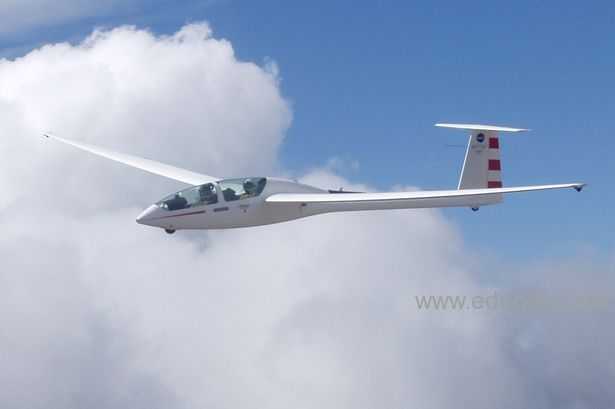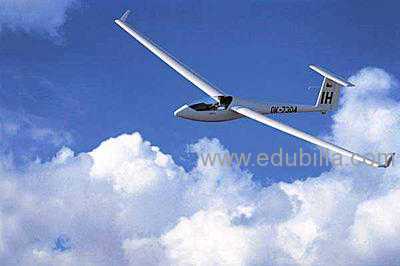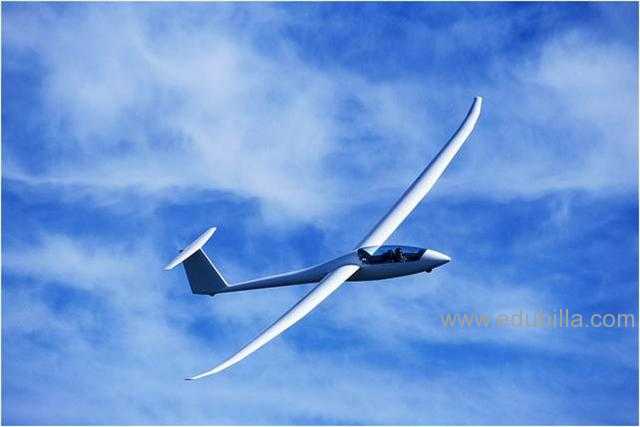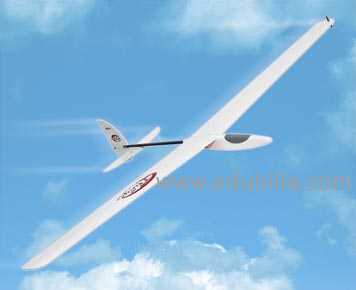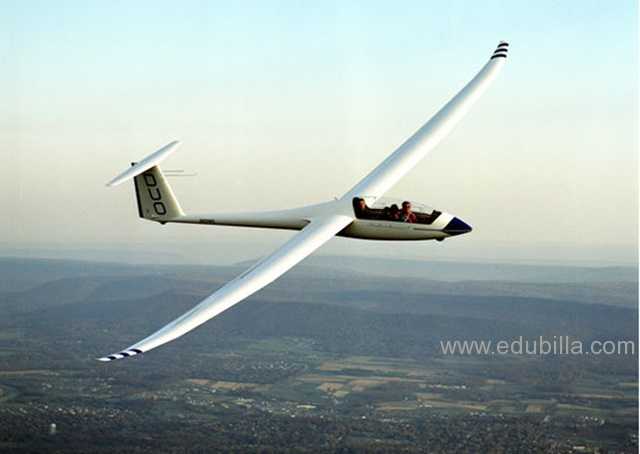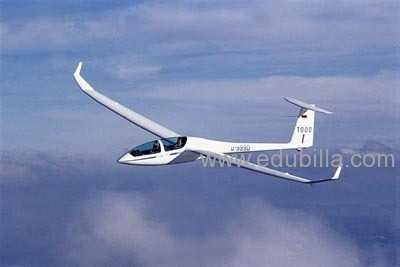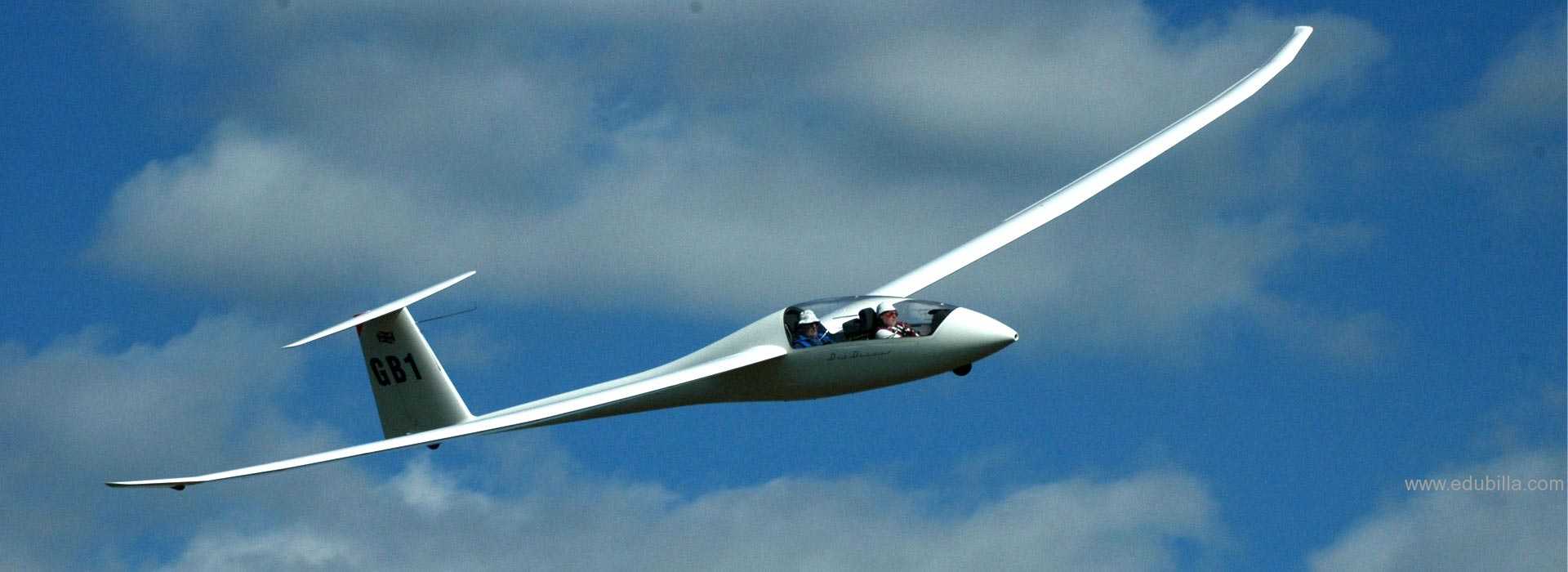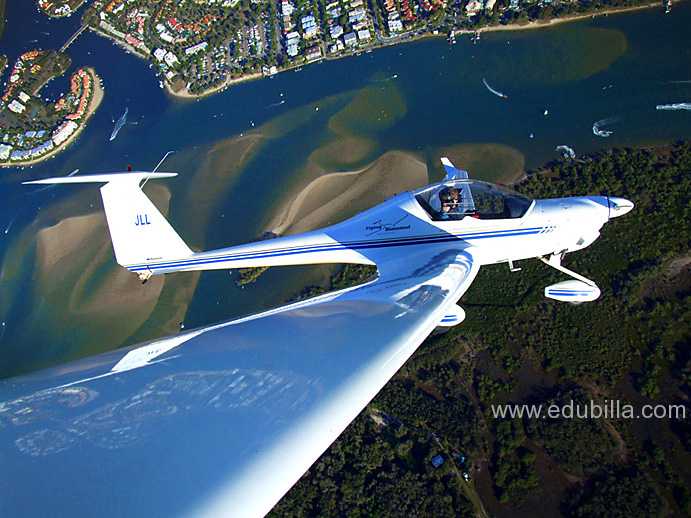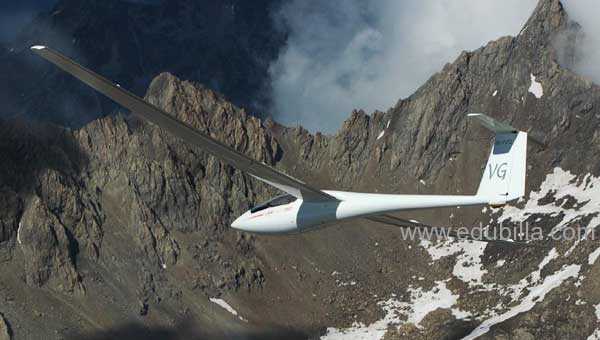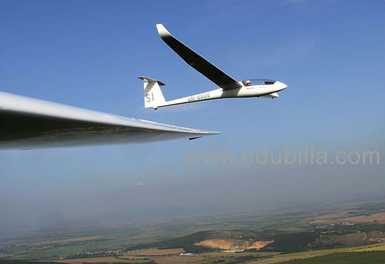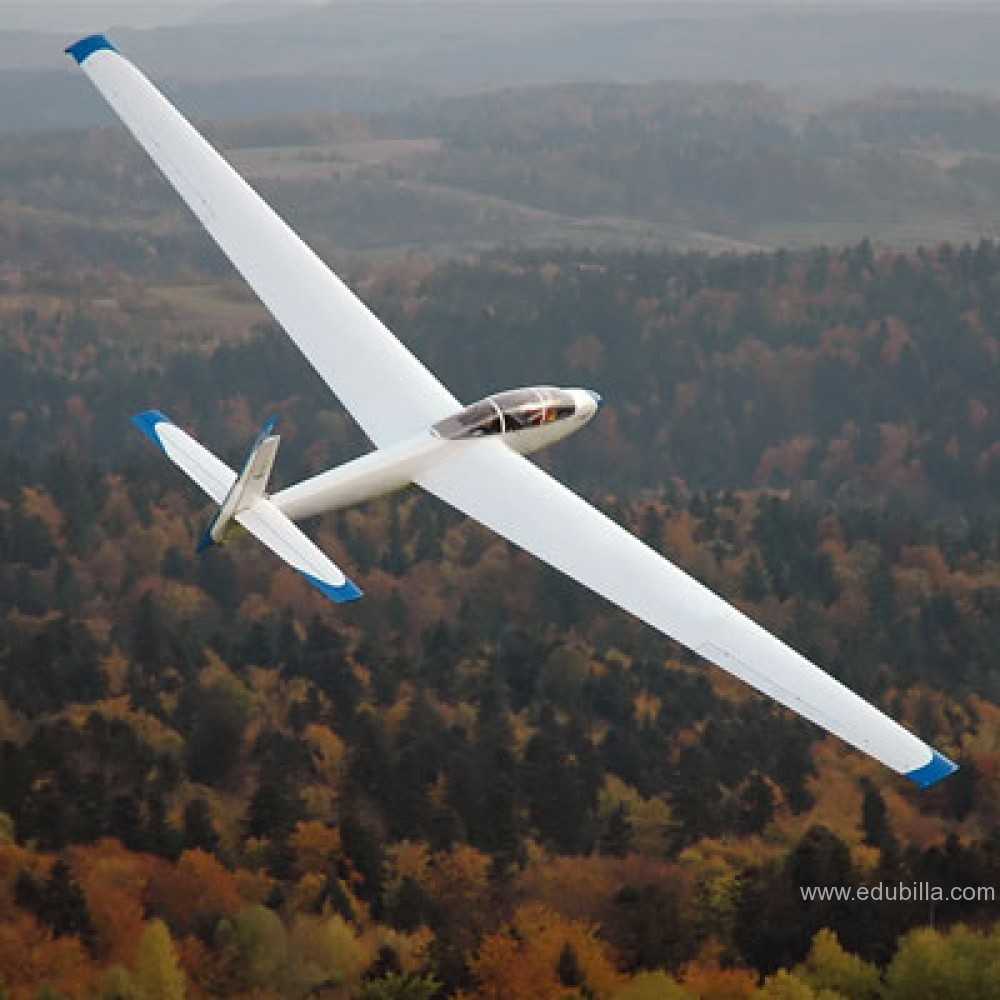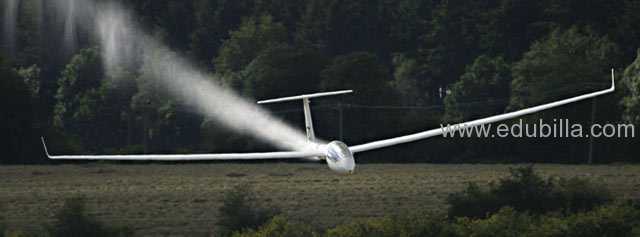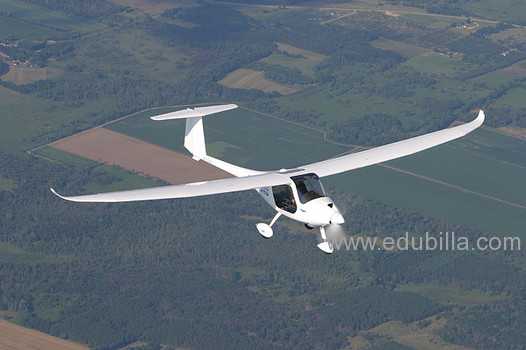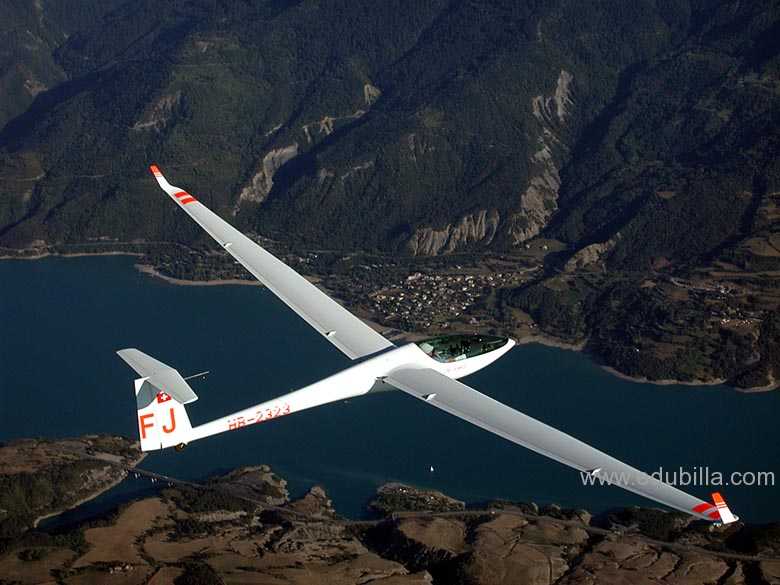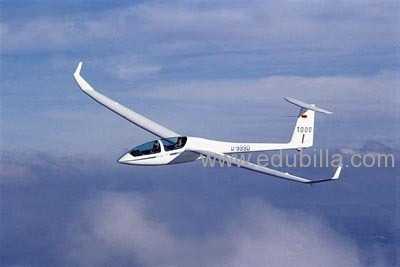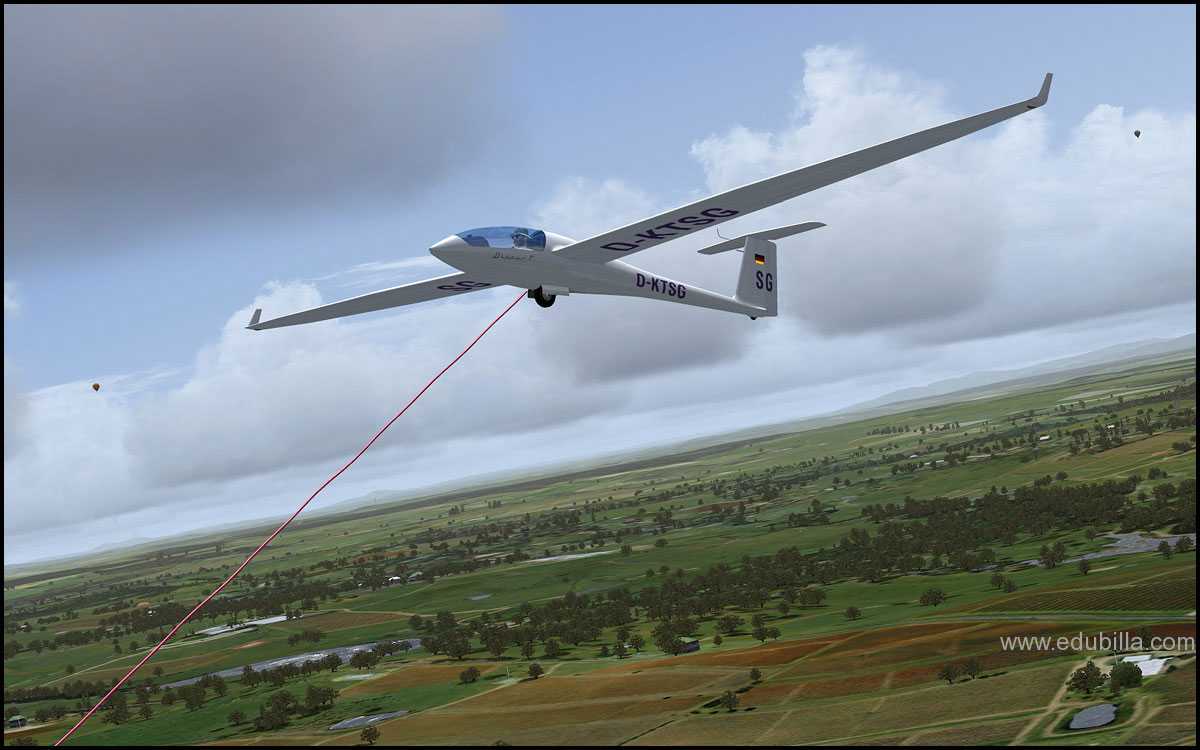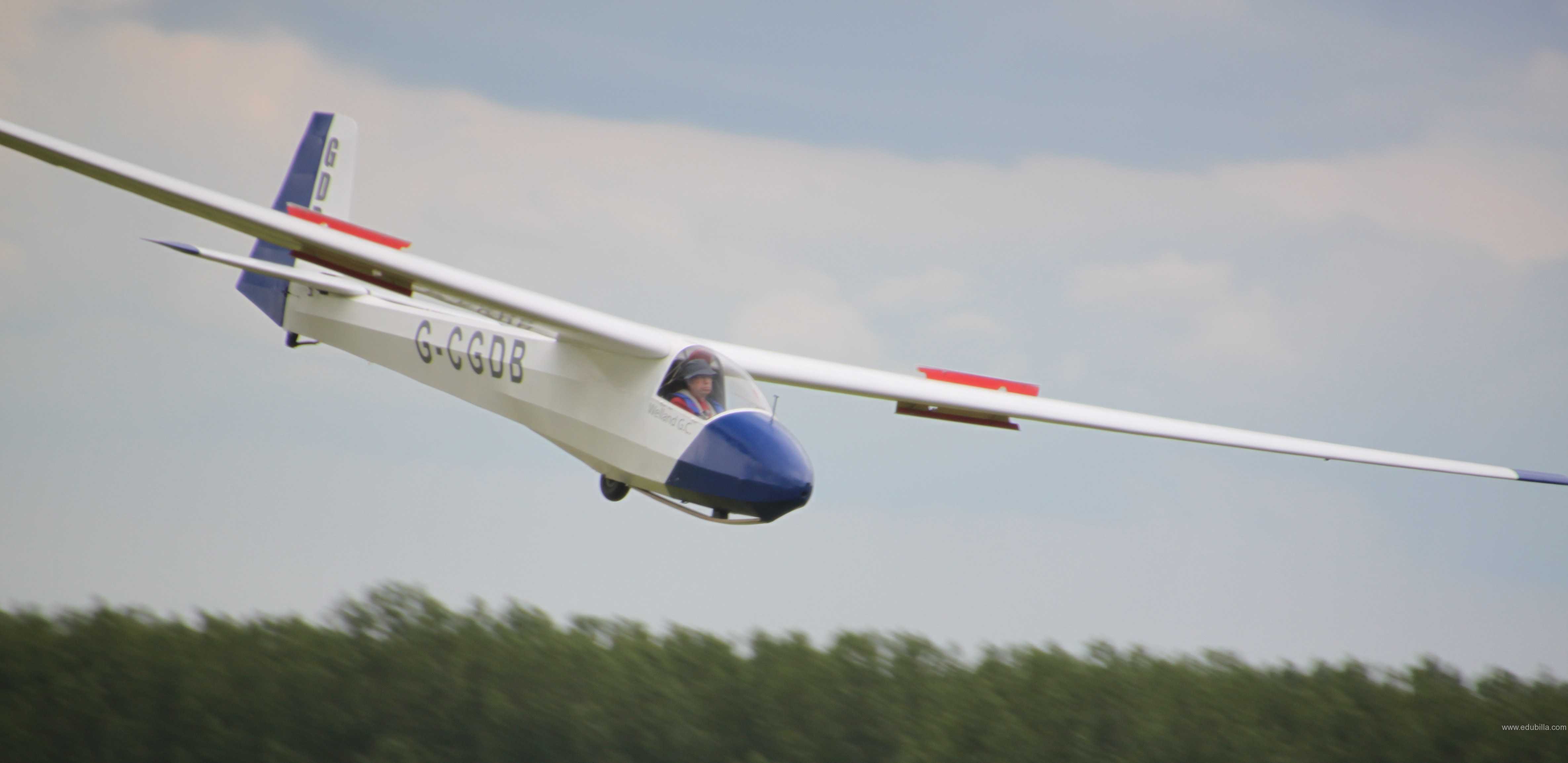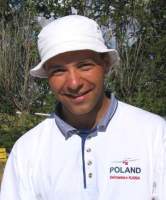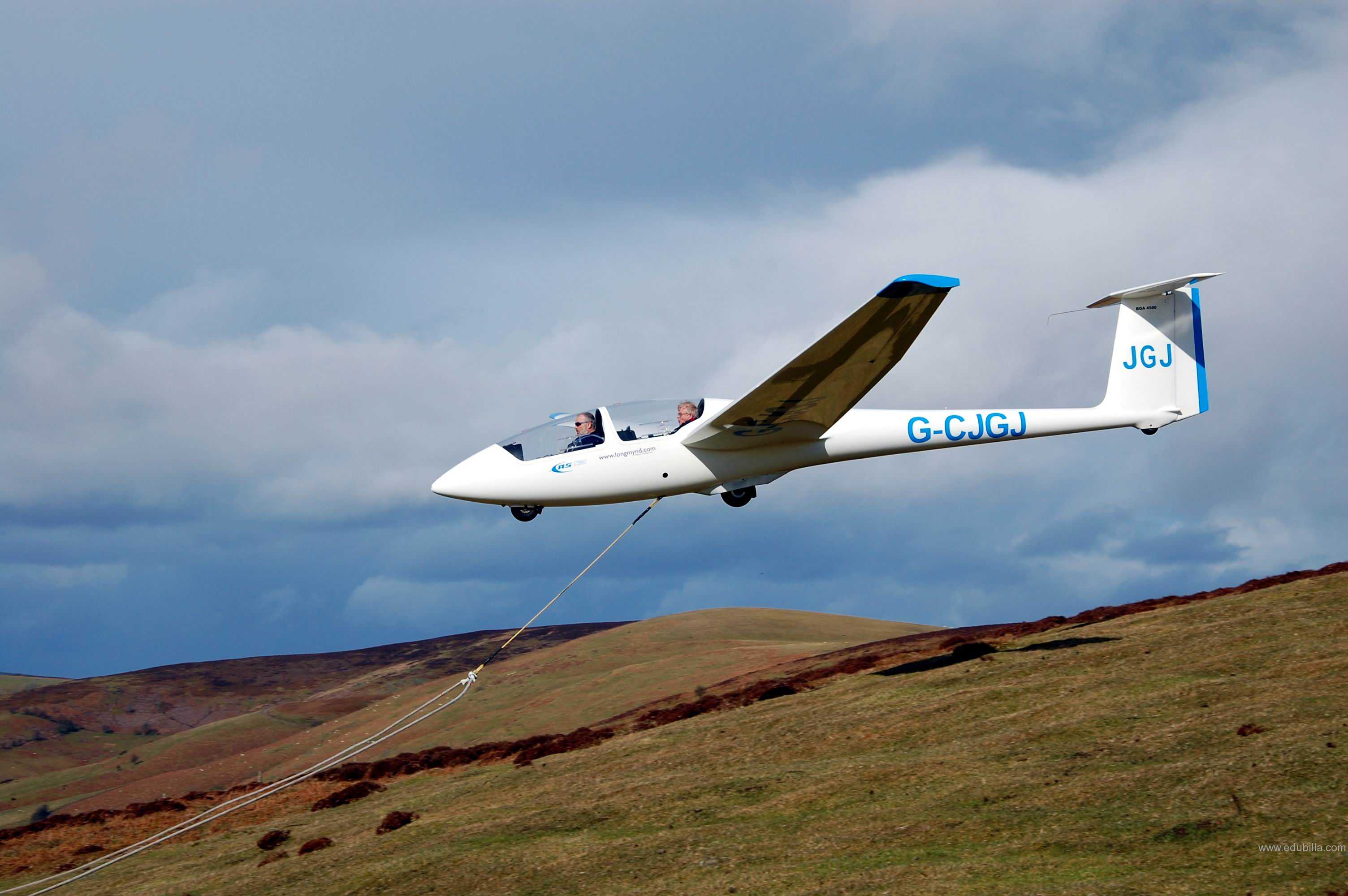
Overview Of Gliding
Gliding is a recreational activity and competitive air sport in which pilots fly unpowered aircraft known as gliders or sailplanes using naturally occurring currents of rising air in the atmosphere to remain airborne. The word soaring is also used for the sport
Birth of Gliding:
Gliding as a sport began in the 1920s. Initially the objective was to increase the duration of flights but soon pilots attempted cross-country flights away from the place of launch. Improvements in aerodynamics and in the understanding of weather phenomena have allowed greater distances at higher average speeds. Long distances are now flown using any of the main sources of rising air: ridge lift, thermals and lee waves. When conditions are favorable, experienced pilots can now fly hundreds of kilometres before returning to their home airfields; occasionally flights of more than 1,000 kilometres (621 mi) are achieved
Gliding Competitions:
Some competitive pilots fly in races around pre-defined courses. These gliding competitions test pilots' abilities to make best use of local weather conditions as well as their flying skills. Local and national competitions are organized in many countries, and there are biennial World Gliding Championships. Techniques to maximize a glider's speed around the day's task in a competition have been developed, including the optimum speed to fly, navigation using GPS and the carrying of water ballast. If the weather deteriorates pilots are sometimes unable to complete a cross-country flight. Consequently they may need to land elsewhere, perhaps in a field, but motorglider pilots can avoid this by starting an engine.
Game Rules
AIRFIELD GROUND RULES:
1.Walking or running on the airfield during flying operations is dangerous, and all members and visitors must be made aware of the dangers. Pedestrians must keep to the roadways and defined areas. Crossing the field at the ends is permitted if all due care is taken to look out for aircraft in the circuit, landing or taking off, and not to interfere with their operation. Particular care must be taken to ensure that visitors understand and comply with this rule.
2.Particular care must be taken in the vicinity of powered aircraft. NEVER approach the front of a powered aircraft in the vicinity of the propellor if it is occupied.
Vehicles on the airfield:
3.Vehicles must keep to the roadways and defined areas. Crossing the field at the ends is permitted if all due care is taken to look out for aircraft in the circuit, or landing or taking off, and not to interfere with their operation. Particular care must be taken to ensure that visitors understand and comply with this rule.
4.Vehicles may only be parked in designated areas at the side of the airfield clear of the operational area. Where parking is in the vicinity of the control van all vehicles must be parked on the down-wind side of the van, as far to the edge of the runway as possible, and only one car in depth. A sign may sometimes be erected restricting the parking of vehicles to an area reserved for the parking of gliders.
5.In extremely wet conditions the field or parts of the field may be closed to all or certain vehicles by the ground marshall, a committee member, or duty instructor.
6.Any vehicle in the likely take-off or landing path of an aircraft must clear the area immediately, but if unable to do so should stop until the aircraft has taken off or landed safely.
Control van:
1.Control operations such as sale of tickets, communications, timekeeping, keeping of flying lists etc. are conducted from a van known as the “control van”. This van is to be taken to the launch site each flying day and parked at the position from which gliders are to be aerotowed.
2. All gliders and vehicles are to be parked on the downwind side of the van, clear of the operational area. Tow planes may park on the up-wind side of the van, clear of the operational area.
Faulty or unsafe equipment:
Any member finding any equipment in a faulty or unsafe condition must report the matter to a committee member or an instructor without delay so that the matter can be rectified.
General safety on the airfield:
Members must always be alert to potential hazards to flying operations on and around the airfield, and must always ensure that all other members and visitors are aware of them also.
Equipments Need For Gliding
- Batteries and Battery Chargers
- GPS Recorder
- TOST
- Varios & Nav Systems
- Clearnav Bundle
- CNi Vario Cross-Country Model
- Liberty 3-Stage Battery Charger
- Le Mark Fabric Tape 50mm (white)
- White fabric tape 50m x 25mm
- Clearnav Stick Controller
- Clearnav Full VGA
- Power Chimp
- BT1000XT GPS Flight Recorder
- ClearNav Tunnel Mount
- Glider main wheels, brake shoes, brake levers & cams etc
History Of Gliding
Sport aviation began in 1909 and it was begun by two schoolboys from Darmstadt in Germany, Hans Gutermuth and Berthold Fischer. They went to a aero-exhibition and came back fired up with enthusiasm. Apparently, not so much enthusiasm to fly as to fly like a bird, with wings strapped to their shoulders. Having little else other than energy, they started to build model gliders and then moved onto full sized ones, initially copying Lillienthal and then moving on to more contemporary biplane designs reminiscent of early Curtis aeroplanes.
Gliding Started It All:
The sleek high performance sailplanes of today have a heritage that dates back to man’s first attempts at flight. History tends to move from the simple to the complex and aviation follows this premise elegantly. With no understanding of aerodynamics, few adequate materials and no available engines avations enthusiasts had to be content with using crude gliders that used the force of gravity and a slope to become airborne. These flights were short and often ended in a less than elegant arrival but it was flying none the less.
Summer Olympics :
In the 1930s, gliding spread to many other countries. In the 1936 Summer Olympics in Berlin gliding was a demonstration sport, and it was scheduled to be a full Olympic sport in the 1940 Games.:148 A glider, the Olympia, was developed in Germany for the event, but World War II intervened. By 1939 the major gliding records were held by Russians, including a distance record of 748 kilometres (465 mi).:107 During the war, the sport of gliding in Europe was largely suspended, though several German fighter aces in the conflict, including Erich Hartmann, began their flight training in gliders.
Gliding did not return to the Olympics after the war for two reasons: a shortage of gliders, and the failure to agree on a single model of competition glider.The re-introduction of air sports such as gliding to the Olympics has occasionally been proposed by the world governing body, the Fédération Aéronautique Internationale (FAI), but has been rejected on the grounds of lack of public interest.
Brief History of Gliding:
This brief history of gliding and soaring covers the most important aspects of the development of the sport and is not a full rendition of history. See the resources at the end of this background for a more on the history of flight.
1490 Leonardo da Vinci drew his first impressions of what a flying machine might have looked like based on the wing of a bat.
1799 Sir George Cayley, a baronet in Yorkshire, England, conceives a craft with fixed wings to provide lift and "flappers" to provide thrust. It also has a movable tail to provide control.
1809 Sir George Cayley builds a man-sized version of his glider with a wing surface of 300 feet. An assistant makes a few tentative hops in the air, holding onto the fuselage.
1884 Gliding flight by John J. Montgomery at Wheeler Hill near San Diego, California, USA
1891-1896 Gliding and possibly some soaring flight by Otto Lilienthal in Berlin, Germany
1896-1897 Gliding and soaring (“quartering” as early pioneers called ridge soaring”) flight by Octave Chanute and his team in Miller Beach, Gary, Indiana, USA
1902-1903 Wright Brothers learn control by flying in ground effect from the shallow dunes amidst wind and sand at Kitty Hawk North Carolina, USA
1903 Octave Chanute reports “that these glides provide the most original and most enticing of sports… Some of our dauntless automobile sportsmen will happen to make themselves similar machines and seek out somewhere a favorable spot for competing in these glides.”
1903 Orville Wright’s first powered flight of just over 1:00 min was achieved by adding a motor their “Flyer” design. This 1902 glider design becomes the basis for their “Flying Machine” patent.
1906 American glider meet sponsored by the Aero Club of America on Long Island, NY. This event was a gathering of about 10-12 members of the club, sharing to fly three biplane gliders.
1911 Intercollegiate meets were held in many areas of our globe, here in the United States, in Europe, but also in Australia. The sport started to find its supporters.
1911 First world soaring duration record: 9:45 min by Orville Wright, Kitty Hawk NC. Accomplished using ridge lift created by the sand dunes near Kitty Hawk, North Carolina, USA.
1920 Soaring becomes organized sport at Wasserkuppe, Germany as the World War I Versailles treaty outlaws flying power aircraft in Germany.
1920-1930 Phase 1 – Discovery: Sources of life and soaring flight discovered, better glider designs, pilot training and USA Glider clubs proliferate with air-minded youth.
1921 Dr. Wolfgang Klemperer breaks the Wright Brothers 1911 soaring record with a 13 minute flight in Germany. Both flights used ridge lift.
1928 Austrian Robert Kronfeld proved that thermal lift could be used by a sailplane to gain altitude by making a short out and return flight.
1929 National Glider Association founded in Detroit, MI
1930–1950 Phase 2 – Development: Aero towing becomes popular, sailplanes develop better performance, the three forms of lift are becoming well known, and soaring distances reach over 300 miles.
1930 First USA National Glider Contest, Elmira NY, 1930. All pre-WWII (up to 1941) Nationals were held at Elmira.
1932 Soaring Society of America incorporated in May, 1932: “To provide an official body with the authority to conduct a contest (the 3rd Nat’l Contest), it was deemed advisable to organize an association.”
1933 Wave lift was discovered by Wolf Hirth and one of his students in 1933 in Germany.
1931 World Duration Record in a single place sailplane, THE “NIGHTHAWK,” in the USA ~ 22 HOURS, flown by Lt WILLIAM Cocke near Honolulu, Hawaii in December, 1931.
1937 Heini Dittmar wins the first recognized World Soaring Championships flying the Sao Paulo at the Wasserkuppe in Germany. Wave flights to high altitudes are accomplished.
1939 US Distance Record flown in the USA was 263 miles, flown by Woody Brown in Jun 1939 with a flight from Wichita Falls, TX to Wichita KS. The World Distance Record was 465 miles flown by Ms.Klepikova in July 1939 in the USSR. US Altitude Record in a single place sailplane reached 17,265 ft by Bob Stanley in July 1939.
1950 First American competes in World Soaring Championships Paul MacCready, Jr flying to second place in Orebro, Sweden flying a Weihe sailplane.
1952 World Soaring Championships in Madrid, Spain: Paul MacCready, Jr, flies to 6th place, flying a Schweizer 1-23, Paul A. Schweizer to 18th place, Dick Johnson to 24th place, and Stan Smith to 31rd place.
1956 First American, Paul MacCready, Jr, wins World Soaring Championships in Saint Yan, France.
1958 The standard class was introduced at World Soaring Championships
1960–1980 Soaring Society of America goes from 1,000 to
16,000 members and from 1 to 5 National soaring competitions.
1957 The prototype of the first composite sailplane PHOENIX had its first flight in 1957 in Germany.
1968 American Andrew J. “AJ” Smith wins World Soaring Championships in Leszno, Poland
1970 American George Moffat, Jr. wins World Soaring Championships in Marfa Texas.
1974 American George Moffat. Jr wins World Soaring Championships in Waikerie, Australia
1978 The 15-meter class was introduced at World Soaring Championships
1980-2002 Phase 4 – Refinement: Growing sophistication of instrumentation with global positioning technology, electronic glide computers and new composite materials combined highly refined aerodynamics create high performance sailplanes. New pilot techniques and the development of better training. Expansion in the number of FAI competitive classes to eight.
1985 American Doug Jacobs wins World Soaring Championships in Rieti, Italy.
1997 The World Class was introduced at World Soaring Championships
1999 The Junior class was introduced at World Soring Championships.
2001 No less than three new classes were introduced at World Soaring Championships including the 18-Meter, Club and Feminine classes.
Origin Of Gliding
Modern aviation is a tribute to humanities ability to dream. Early pioneers first dreamed of flight and then put intelligence and perseverance to work to see these dreams become reality. The jets we take for granted today use technology that dates back to the beginnings of aviation history when these daring inventors made the first glides down hills in wood and fabric covered craft of every description.
First World War:
The development of heavier-than-air flight in the half century between Sir George Cayley's coachman in 1853 and the Wright brothers mainly involved gliders (see Aviation history). However, the sport of gliding only emerged after the First World War, as a result of the Treaty of Versailles,which imposed severe restrictions on the manufacture and use of single-seat powered aircraft in Germany's Weimar Republic.
The "gull wing" Göppingen Gö 3 Minimoa produced in Germany from 1936
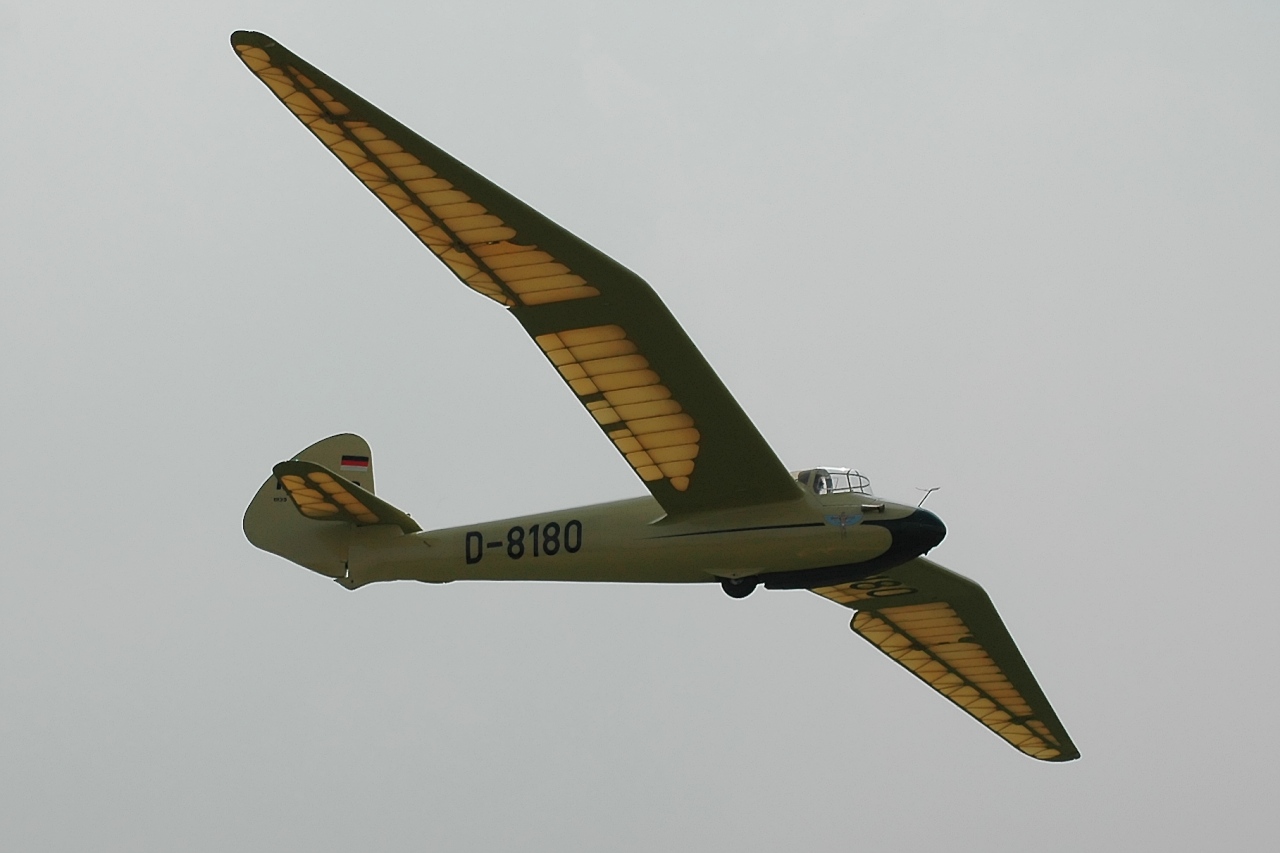
German government:
in the 1920s and 1930s, while aviators and aircraft makers in the rest of the world were working to improve the performance of powered aircraft, the Germans were designing, developing and flying ever more efficient gliders and discovering ways of using the natural forces in the atmosphere to make them fly farther and faster. With the active support of the German government, there were 50,000 glider pilots by 1937.
First German Gliding Competition:
The first German gliding competition was held at the Wasserkuppe in 1920,:51 organized by Oskar Ursinus. The best flight lasted two minutes and set a world distance record of 2 kilometres (1.2 mi).:54 Within ten years, it had become an international event in which the achieved durations and distances had increased greatly. In 1931, Gunther Grönhoff flew 272 kilometres (169 mi) on the front of a storm from Munich to Kada? (Kaaden in German) in Western Czechoslovakia, farther than had been thought possible.
popularity:
In many countries during the 1950s a large number of trained pilots wanted to continue flying.
Soaring Society of America:
Many were also aeronautical engineers who could design, build and maintain gliders. They started both clubs and manufacturers, many of which still exist. This stimulated the development of both gliding and gliders, for example the membership of the Soaring Society of America increased from 1,000 to 16,000 by 1980.
Governing Bodies
Fédération Aéronautique Internationale, FAI :
The Fédération Aéronautique Internationale, FAI – The World Air Sports Federation, is the world governing body for air sports, aeronautics and astronautics world records. Its head office is in Lausanne, Switzerland.This includes man-carrying aerospace vehicles from balloons to spacecraft, and unmanned aerial vehicles (such as model aircraft and UAVs). It was founded on 14 October 1905.
History of FAI:
The FAI was founded at a conference held in Paris 12–14 October 1905, which was organised following a resolution passed by the Olympic Congress held in Brussels on 10 June 1905 calling for the creation of an Association "to regulate the sport of flying, ... the various aviation meetings and advance the science and sport of Aeronautics."The conference was attended by representatives from 8 countries: Belgium (Aero Club Royal de Belgique, founded 1901), France (Aéro-Club de France, 1898), Germany (Deutscher Aero Club e.V.), Great Britain (Royal Aero Club, 1901), Italy (Aero Club d'Italia, 1904), Spain (Real Aero Club de España, 1905), Switzerland (Aero-Club der Schweiz, 1900) and the United States (Aero Club of America, 1905).
To Visit FAI Click Here.
Awards Related To Gliding
- Air Sports Medals
- FAI-Breitling Awards
- Prince Alvaro de Orleans Borbon Grant
- IOC Women and Sport Award
Sample Documents Of Gliding
-Muhammad Ali




